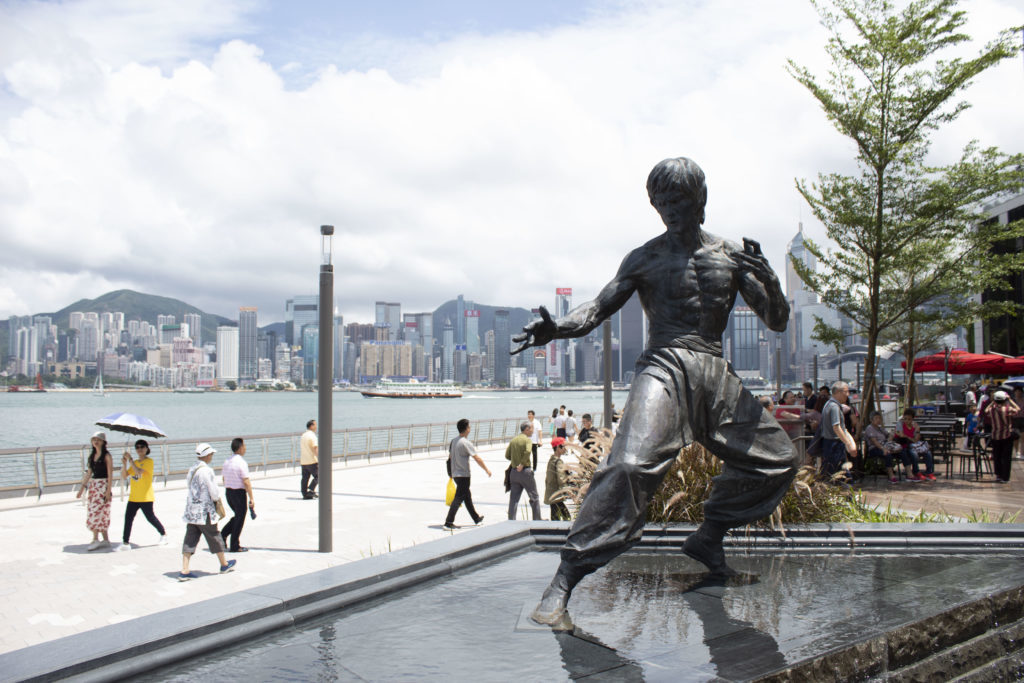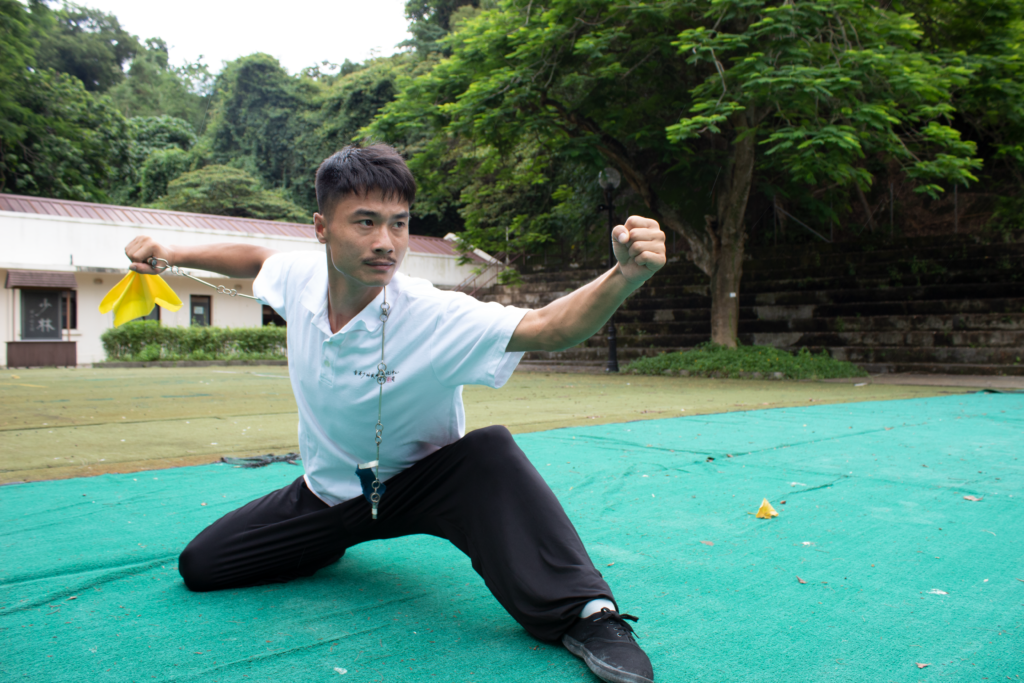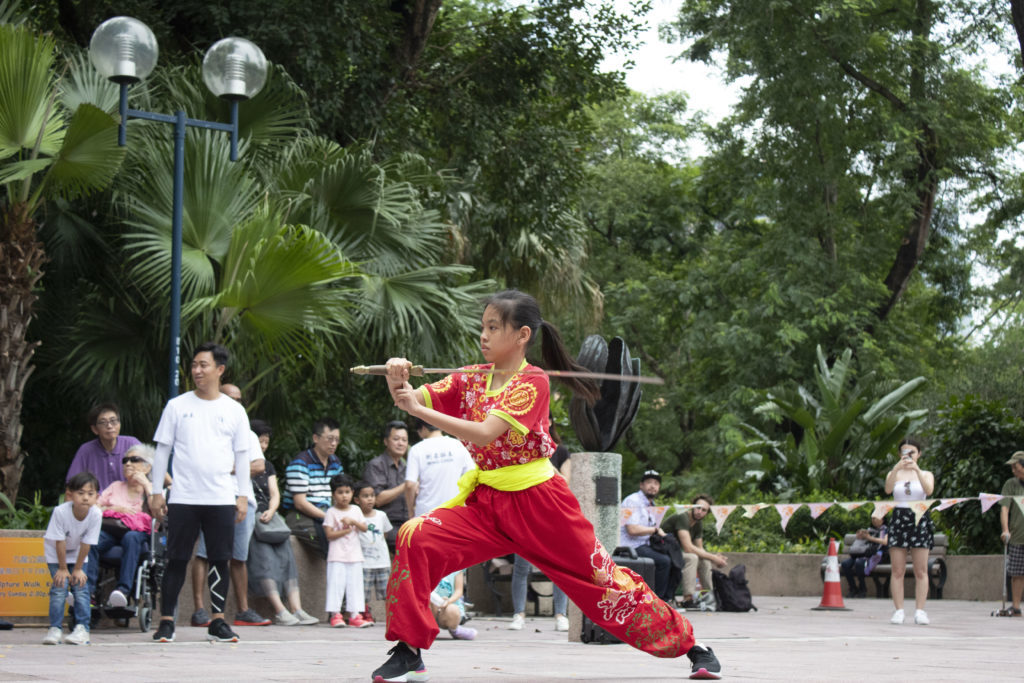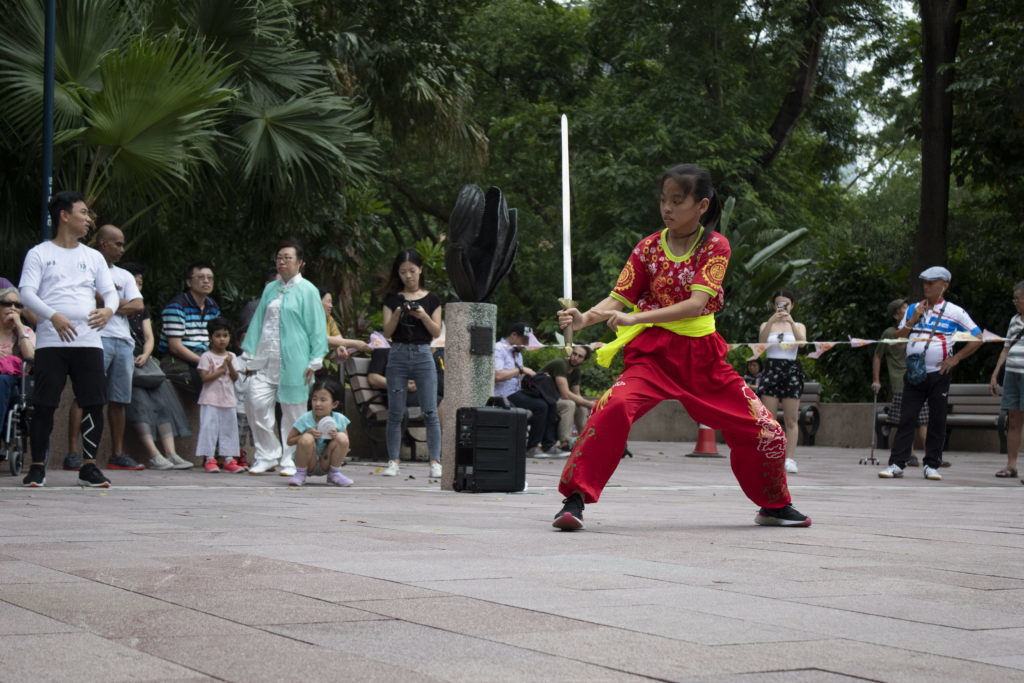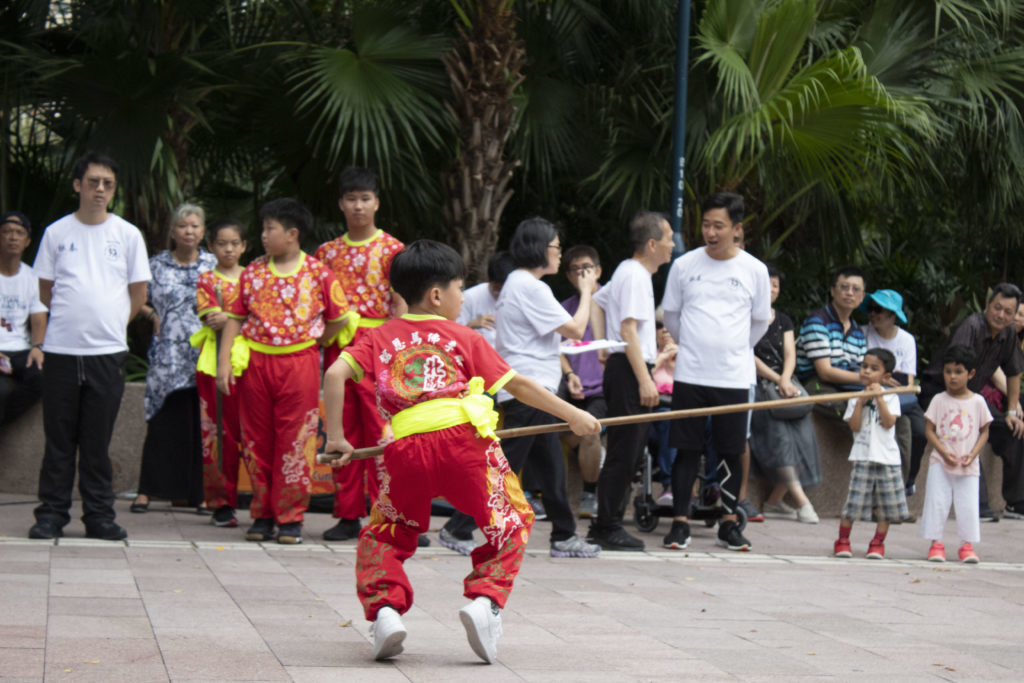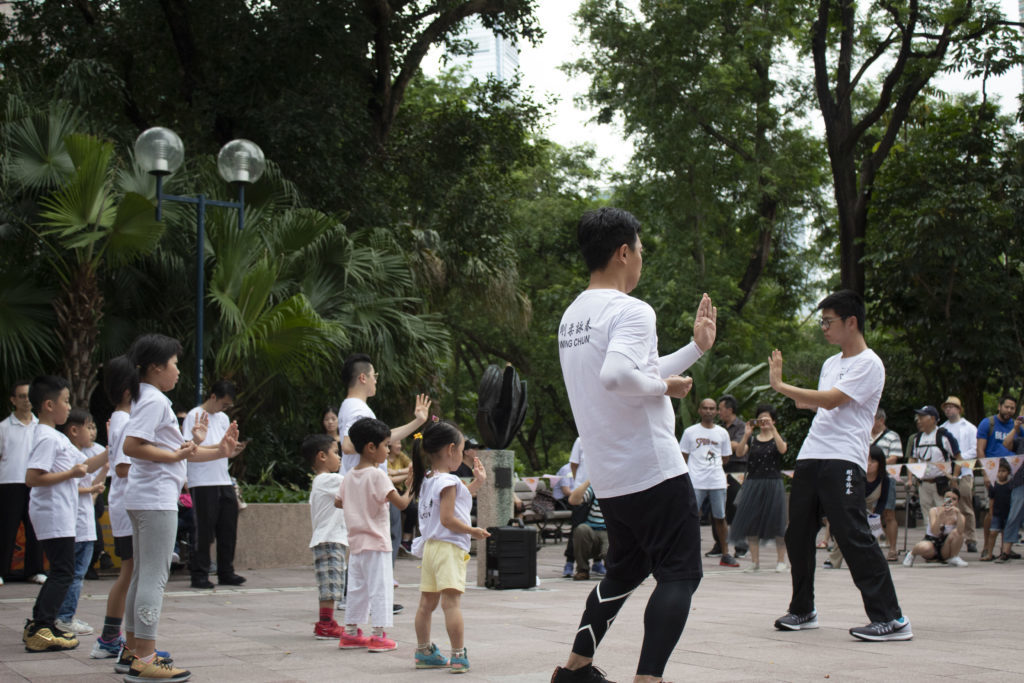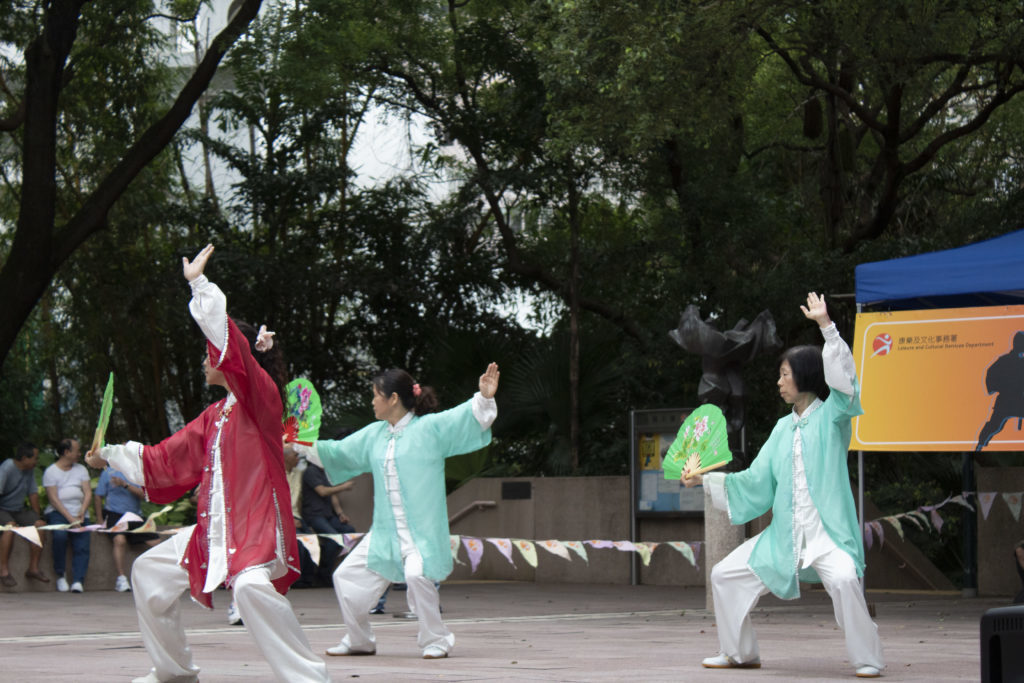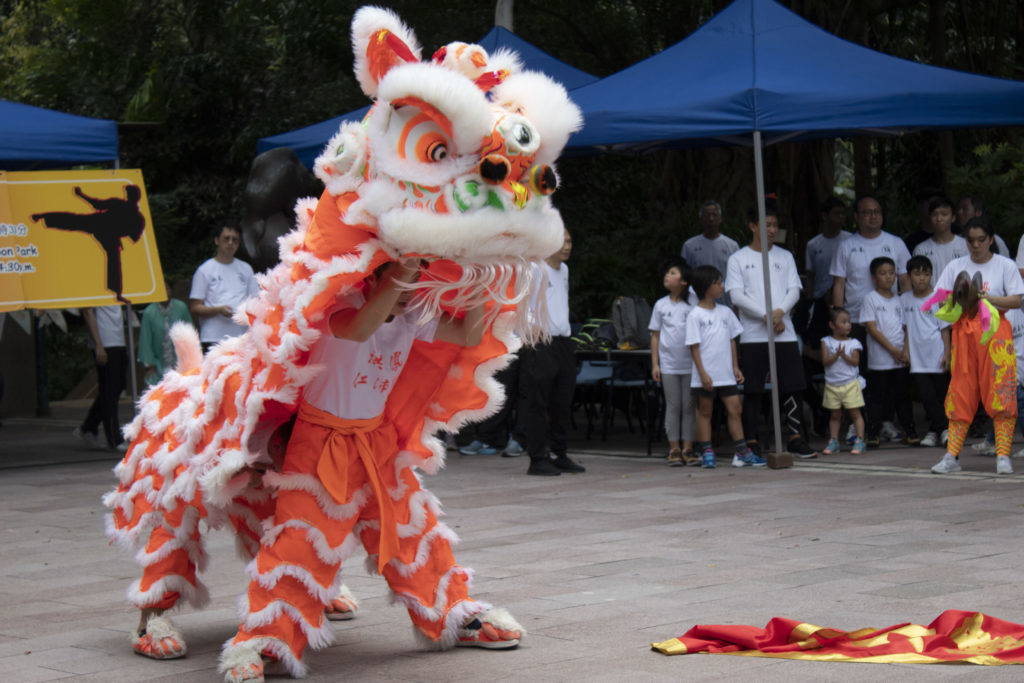Story and multimedia by Daniel Drigo, Jessica Fonseca, Kaitlyn-Lee Mun and David Venn
A taoist martial arts instructor stands authoritatively in front of his subjects. Their eyes are tranced, watching him undulate with a two-metre long bamboo stick, trying to mimic his motion. His orders for them to watch their breath and focus match that of the live music, which has spontaneously broken out from a few trees and a couple shrubs over in Kowloon Park. There are four members in total, including the master. They look at peace. They look determined. And they look confident.
An Indian monk of the warrior caste, named Bodhidarma, arrived at the entrance of a Shaolin Temple in 527 A.D. Upon denial of entry, he took homage at a nearby cave, where he proceeded to stare at a wall for nine years in meditation. Chinese folklore states Bodhidarma’s gaze cast a hole through the wall by the time Shaolin Temple monks let him inside. It’s said that Bodhidarma believed the Chinese to be weak and fragile. So he began teaching a type of movement that could link the physical and mental being as one; to act as a hybrid between the body and meditation. This today, is known around the world as kung fu.
Many people who decide to learn kung fu cite their fanaticism with Bruce Lee and other Asian-born movie stars as a motivator to practice the martial art form. Lee, undisputedly the most popular, was born in 1940 in San Fransisco, CA and went on to make feature films in America. Through Bruce Lee’s inauguration into Hollywood superstardom in the 1970’s from films such as Fist of Fury and Enter the Dragon, kung fu became a global anomaly.
“That’s why Hong Kong is very famous for kung fu, because of Bruce Lee,” Patrick Hsu said, instructor at IWKA. “He [made] it popular around the world.”
James Yuen, a 19-year-old practitioner of Southern Fist at the Wushu Team Centre would agree, saying, “I feel like it’s popular amongst all ages. Because kung fu is definitely seen in pop culture a lot.”
For Hong Kong’s youth, like James and his teammates, it was their parents who would have grown up through kung fu’s golden era, erring them on the side of martial arts. “When I first interacted with martial arts, I actually learnt it from my dad,” said Yuen.
But Bruce Lee’s significance was long ago, and although one could assume the popularity of kung fu has dwindled along with the ranks of kung fu actors, local artists said they haven’t seen a decline and that actually, practicing kung fu now may be more relevant than ever.
“I think it’s getting more and more popular,” Hsu said, referring to school programs that aim to get youth involved with the traditional art form. “The way of teaching is changing right now, so that’s why I don’t think it’s disappearing.”
In recent years, many studios have adopted the tiered belt system after they found that their students have more ambitious motives than that of their predecessors. “In the past, during my father’s and grandfather’s generation, they didn’t have that much entertainment, that’s why they practiced kung fu,” Hsu said. “Millennials have a lot of things they can do.
“If you teach Wing Chun in a more systematic way, it’ll be more effective because they can follow a teaching scheme. Nowadays people are more goal-oriented. So if they can see a clear goal, they can pursue the goal much better.”
And that goal is complete harmony, according to multiple instructors.
“We are practicing [to make] the body and mind as one system to improve our character, our own nature,” said Leep Po Nang, representative of Taoist Quan Zhen.
“It’s the mind, it’s really about the mind; how you can push through yourself,” Hsu emphasized. “Through your daily practice you can try to think about how to use that mindset in your daily life.”
Perhaps today’s global and local socio-political atmosphere, Po Nang reckoned, is even more of a reason for people to take up kung fu. The harshness of life requires full strength: a message that Po Nang would like to share with today’s youth.
Despite having various organizations that extend their services to school children, kung fu seems to not have the reach with today’s youth that it once did.
Trisha Chen, 24-year-old student at Hong Kong Baptist University, said she wanted to learn kung fu, but never got around to it. Not only that, but it’s hard to do so because those in her social group have not learned it either. “I don’t have any friends that [practice] kung fu.”
Parental figures, new structural advances in the artform and kung fu’s power to transform your life in different ways are the main reasons people seem to continue this art form. However, the main driver of kung fu, the celebrities who kicked the world, are not as prominent as they once were and for some, that has had a much larger impact than one could anticipate.

